One of the most important aspects of Learning the Arabic Alphabet is understanding how each letter changes its shape depending on where it appears in a word. The letter Thā’ (ث) is a great example of this feature in the Arabic alphabet. Recognized by its three dots above the character, Thā’ has four different shapes depending on its position: initial, medial, final (connected), and isolated. In this article, we will explore each of these forms to help learners grasp how Thā’ functions within the Arabic alphabet.
Interactive Worksheets for Practicing Thā’ in the Arabic Alphabet
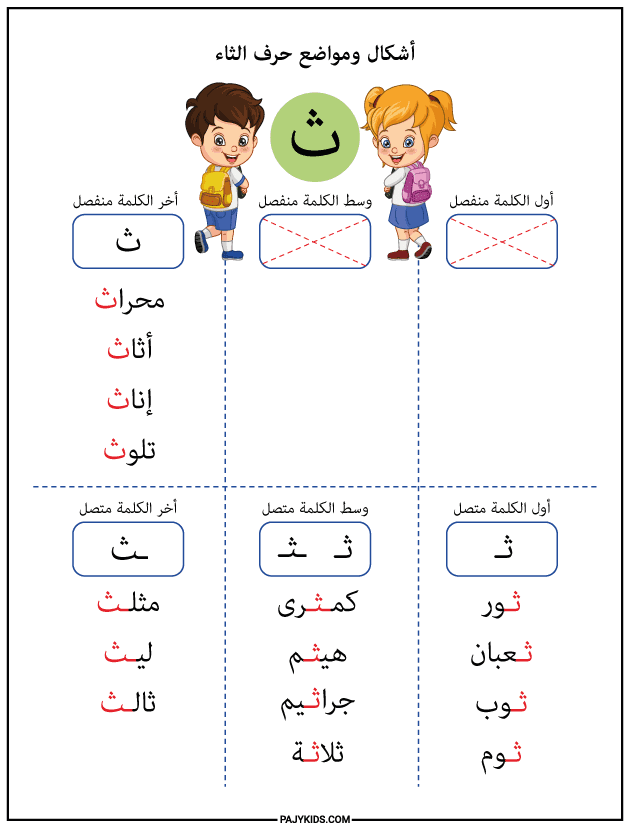
- Initial Position of Thā’: (ثـ)
When Thā’ appears at the beginning of a word, it takes the shape ثـ, and it connects to the letter that comes after it. This form is used in words like ثوب (thawb) and ثمر (thamar). Recognizing this version is essential for beginners learning the Arabic alphabet, as initial shapes are key to reading basic vocabulary.
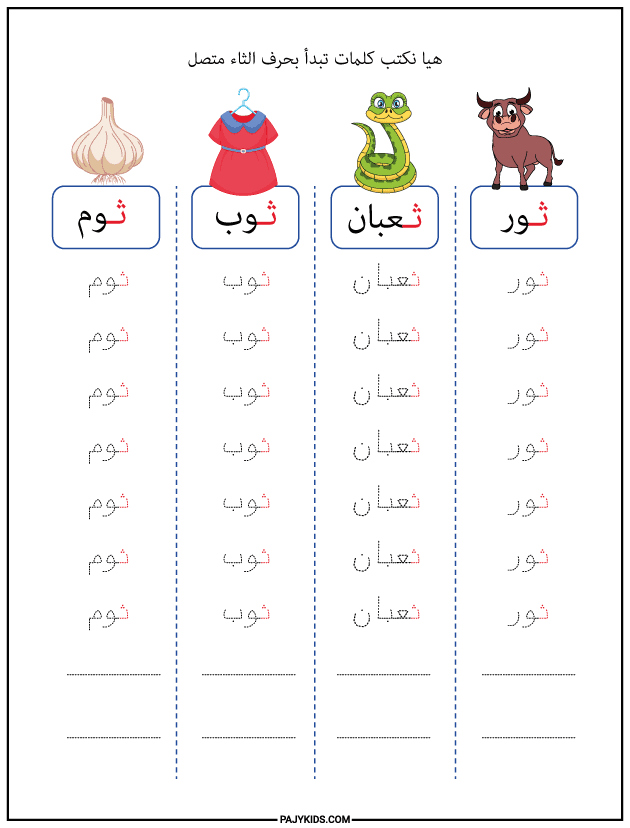
- Medial Position of Thā’: (ـثـ)
In the middle of a word, Thā’ connects to both the letter before and after it, and appears as ـثـ. For example, in words like مُثمر (fruitful) and كثرة (abundance), Thā’ takes on this joined form. Understanding this position helps learners build fluency and spot patterns across words within the Arabic alphabet system.
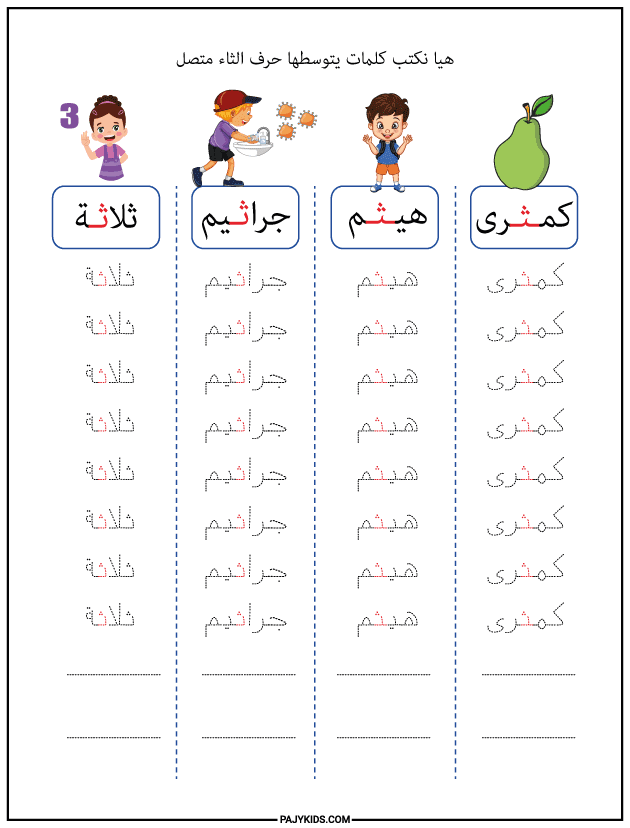
- Final Connected Position of Thā’: (ـث)
When Thā’ appears at the end of a word and is connected to the letter before it, its form is ـث. Examples include لبث (to stay) and مثلث (Triangle). This connected form often marks the completion of a word and must be practiced to achieve proper reading and writing in the Arabic alphabet.
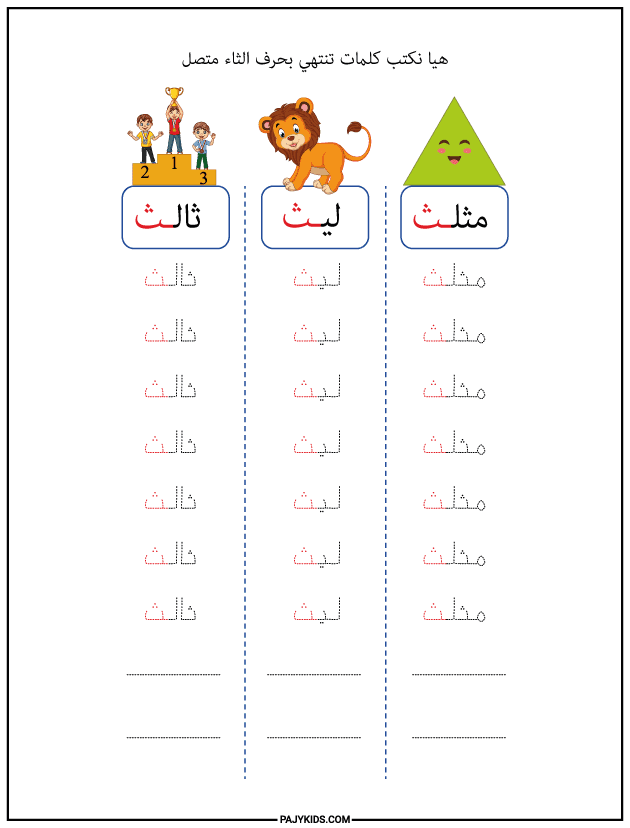
- Isolated Final Form of Thā’: (ث)
Sometimes Thā’ stands at the end of a word but remains isolated, especially when the previous letter doesn’t connect. In such cases, the letter keeps its basic form: ث. Identifying this shape reinforces full awareness of letter behavior in different word positions.
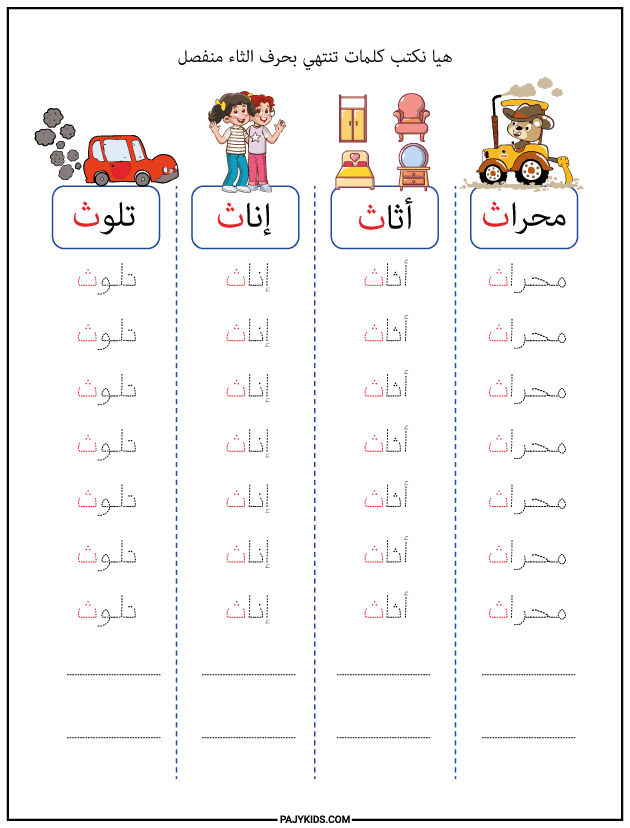
To master the various shapes of Thā’, consistent writing and recognition exercises are essential. Using flashcards, tracing worksheets, or interactive language apps can help learners memorize and apply the forms. This skill is fundamental to anyone aiming to read and write confidently in the Arabic alphabet.